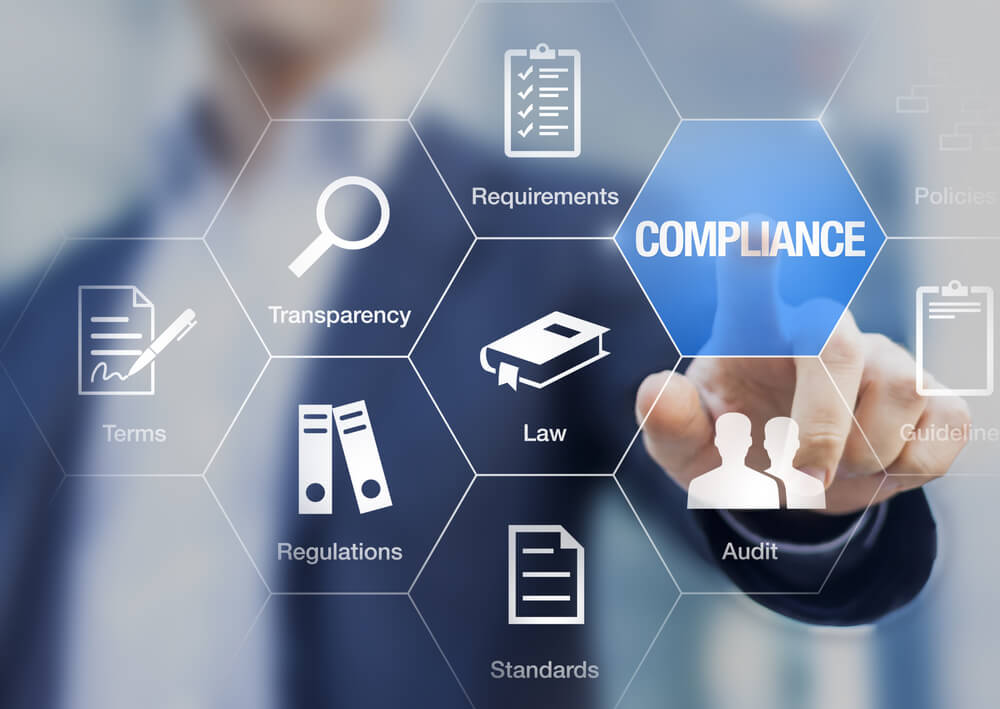
What is NIST Compliance?
The National institute of Standards and Technology is a government agency that is responsible for developing technology, its metric and standards that are necessary for driving economic competitiveness and innovation in organizations that are based in the United States. The NIST guidelines usually provide the necessary standards that are necessary for the recommended information security control at the federal government’s agencies.
The NIST standards are as a result of best practices from documents, security, organizations and even publications and have been designed to create a framework that makes it possible for federal agencies to have tough security measures. In most of the cases, by complying with the NIST recommendations and guidelines, federal agencies are able to comply with regulations like FISMA, HIPAA or SOX. For instance, NIST has created these steps to ensure compliance with NISA:
- Putting the information and data you want to protect in various categories.
- Create a baseline on the minimum controls that are necessary for protecting information
- Carrying out risk assessment to refine the baseline controls
- Put in writing the baseline control
- Put in place the right security control for your system
- After the implementation, monitor the performance to determine the effectiveness of the security control
- Determine the risk at the agency level depending on how you have assesses the security controls
- Ensure that you are monitoring security controls
The Benefits of NIST Compliance
One of the benefits of compliance with NIST is that it ensures the security of the company’s infrastructure. NIST is responsible for the laying of the foundational protocols that need to be followed by companies in order to achieve compliance with different regulations such as FISMA and HIPAA.
One thing you need to bear in mind is that complying with NIST isn’t a total assurance of the security of your data. This is the reason why NIST guidelines start by making it clear that companies will need to have an inventory of their cyber assets, using the value-based approach to find the data that is more sensitive and prioritize their security efforts in data protection.
Benefits of Using a Third-Party To Become NIST Compliant
1. Ensure compliance of products
There are many financial agencies that have created third-party programs that are meant to determine if the entities put under regulation are complying with the standards set and other requirements.
These programs can be used by third parties to determine how safe products such as imported foods, medical devices, children products, cellphones and other equipment for use in the workplace area. It is also the role of the third parties to determine whether products that are labeled as energy-efficient, water-efficient or organic meet the standards set by the federal government.
2. Enhance the efficiency of regulation
There are many instances when federal agencies are finding it difficult to check the compliance of a huge number of products and entities even with their resources remaining constant. The use of third-party programs can help to leverage the expertise and private resources to ensure the efficacy of the regulation and at a lower cost.
When you compare this with many other regulation methods, there are higher chances of third party programs ensuring that compliant assessment occur more frequently and more reliably and within the complete compliance data.
Since agencies can order third parties from other countries to carry out assessment activities, this means that the third-party programs can be quite effective where there are regulated international processes and products.
3. Conformity assessment
Assessment of regulatory compliance is also a kind of conformity checking. Most of the federal agencies that use third-party software use the conformity assessment standard. For instance, an agency may require that the third party that certify conformity with the regulatory rules work within the International standards followed by other international bodies.
There may also be a requirement for the accreditation of the third party by the relevant bodies appearing within the internal standards. There are accreditation bodies in nearly all countries and these could either be governmental or private.
The agencies that are responsible for the establishment of the third-party programs are not supposed to delegate the regulatory authority to bodies that perform conformity assessment. Instead, the conformity assessment bodies are required to carry out certain technical tasks that are supposed to determine conformity.
These assessments are what the regulatory assessment bodies rely on to enforce regulatory requirements. This is aimed at leveraging the resources and expertise of the private sector in meeting the regulatory objectives. Since it is the regulatory body that is supposed to stay responsible in achieving the necessary regulatory goal, it is important for the activities conducted by third parties to be overseen.
The Role of NIST
If an agency wants to join a third-party program, they can get in touch with the National Institute of Standards and Technology (NIST). This is the body that is tasked with coordinating conformity assessment activities of the government with the same kind of activities that are in the private sector to ensure that there are no complexities and duplications.
The role of NIST is to offer programs, solutions and advice to support the development of conformity assessment programs and technical standards in support of the mission of the agency. NIST is also supposed to develop and even carry out customized standards with related workshops and the government’s educational events.
Should federal agencies establish third-party programs?
With the increased use of third parties, it is important for federal agencies to determine how and whether they should establish these kinds of third-party programs that are meant to assess the different regulatory compliance. It is recommended that when putting in place a third party program, it is important for the relevant agencies to contact the governmental as well as nongovernmental resources.
The next step should involve the agencies comparing the pros and cons of the third party approach as compared to other traditional approach that involved the direct governmental compliance assessment. Also, where an agency wants to put in place a program where regulated bodies can choose whether there is a need to contract third parties for regulatory compliance assessment, it is important to first determine whether the regulated bodies will put in place enough incentives that will allow them to contract third parties.
Transparency of the program
Another key issue that should be taken into account is on whether the agencies that have accepted to put into place third party programs have a system for conformity assessment that is equal to the risks associated with the regulatory noncompliance.
In cases where regulatory compliance causes a risk to important values such as public safety or health, the third-party rule is supposed to guarantee that there will be a high degree of independence and rigor. Where this is deemed possible, an agency should use the already existing assessment standards for conformity. This can ensure that there isn’t any duplication and can also create efficient programs for the regulated entities as well as the agency itself.
It is also the role of an agency to uphold the right of the public and government to access to information in regard to the operation of the program. It is also important for the agency to carry out the right oversight activities that can ensure that their programs are able to fulfill the purpose of the regulation.



